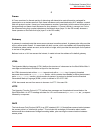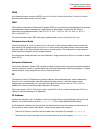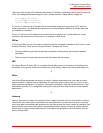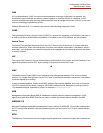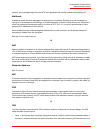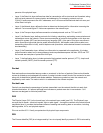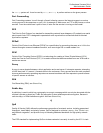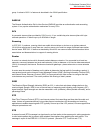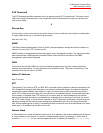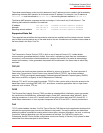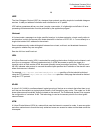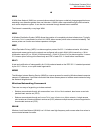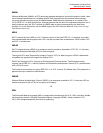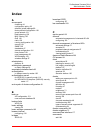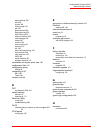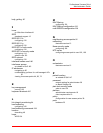
Professional Access Point
Administrator Guide
Glossary - 318
RTS Threshold
The RTS threshold specifies the packet size of a request to send (RTS) transmission. This helps control
traffic flow through the access point, and is especially useful for performance tuning on an access point
with a many clients.
S
Shared Key
A shared key is used in conventional encryption where one key is used both for encryption and decryption.
It is also called secret-key or symmetric-key encryption.
Also see Public Key.
SNMP
The Simple Network Management Protocol (SNMP) was developed to manage and monitor nodes on a
network. It is part of the TCP/IP protocol suite.
SNMP consists of managed devices and their agents, and a management system. The agents store data
about their devices in Management Information Bases (MIBs) and return this data to the SNMP
management system when requested.
SSID
The Service Set Identifier (SSID) is a thirty-two character alphanumeric key that uniquely identifies a
wireless local area network. It is also referred to as the Network Name. There are no restrictions on the
characters that may be used in an SSID.
Static IP Address
See IP Address.
STP
The Spanning Tree Protocol (STP) an IEEE 802.1 standard protocol (related to network management) for
MAC bridges that manages path redundancy and prevents undesirable loops in the network created by
multiple active paths between client stations. Loops occur when there multiple routes between access
points. STP creates a tree that spans all of the switches in an extended network, forcing redundant paths
into a standby, or blocked, state. STP allows only one active path at a time between any two network
devices (this prevents the loops) but establishes the redundant links as a backup if the initial link should
fail. If STP costs change, or if one network segment in the STP becomes unreachable, the spanning tree
algorithm reconfigures the spanning tree topology and reestablishes the link by activating the standby
path. Without spanning tree in place, it is possible that both connections may be simultaneously live, which
could result in an endless loop of traffic on the LAN
Subnet Mask
A Subnet Mask is a number that defines which part of an IP address is the network address and which part
is a host address on the network. It is shown in dotted-decimal notation (for example, a 24-bit mask is
shown as
255.255.255.0
) or as a number appended to the IP address (for example,
192.168.2.0/24
).



